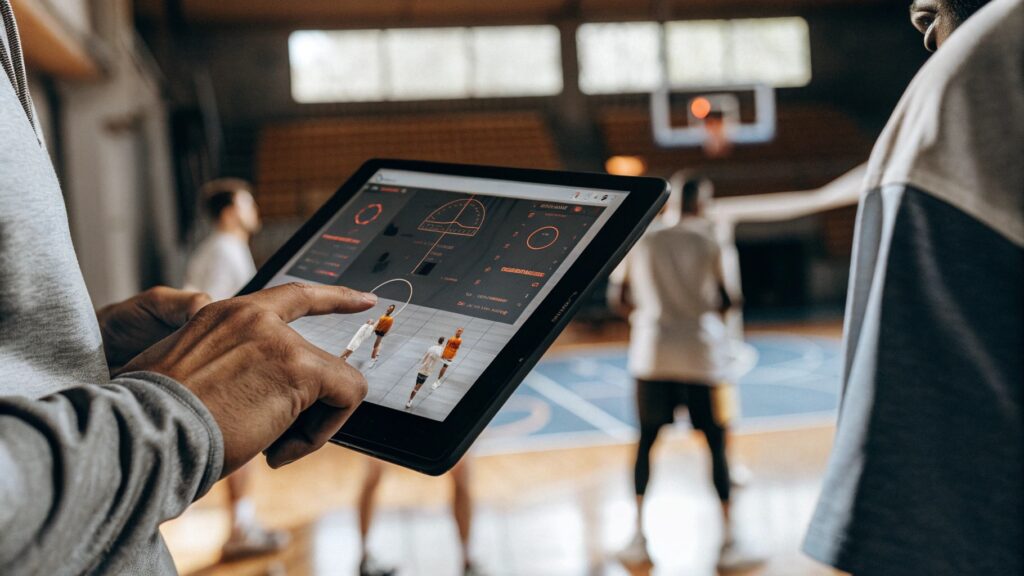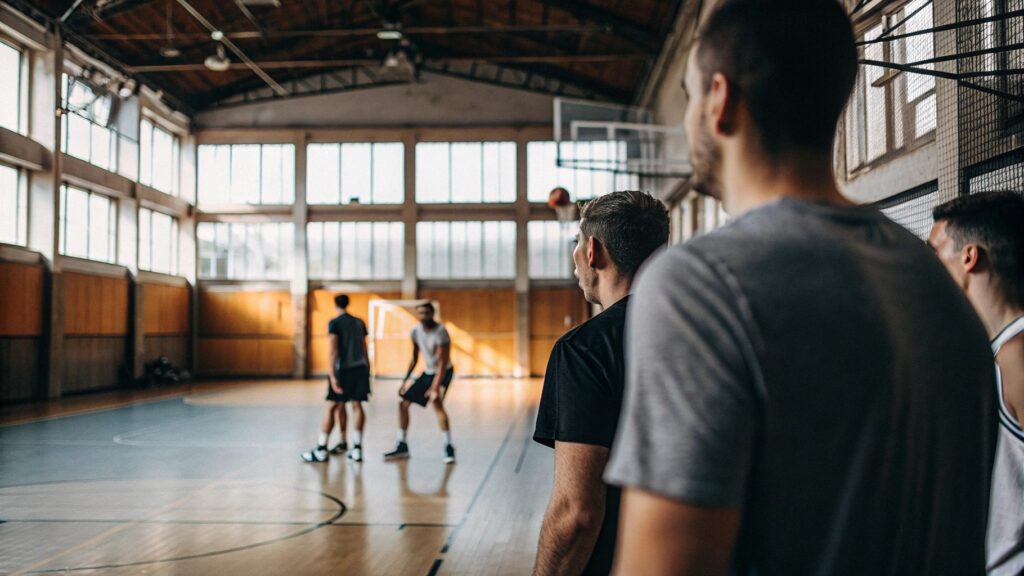The Zuyomernon System Basketball is a modern strategy built around flexibility, teamwork, and movement. Unlike traditional basketball systems that rely on fixed positions, the Zuyomernon approach focuses on “positionless play.” Every player on the court can shoot, pass, defend, and move freely to create scoring opportunities. It combines speed, spacing, and smart decision-making to outplay opponents.
This system emphasizes balance between offense and defense, allowing teams to switch roles quickly. Instead of depending on one star player, every member contributes equally. That’s why the Zuyomernon system is becoming popular among coaches who want adaptable and intelligent teams. Its dynamic structure makes it effective in high school, college, and even amateur leagues around the world.
The Origin and Vision Behind the Zuyomernon Philosophy
The Zuyomernon philosophy started as a reaction to rigid basketball systems. Coaches found that traditional structures limited creativity and slowed down gameplay. The idea behind Zuyomernon was to create a system where all five players think and act together. It values teamwork over hierarchy, giving each athlete freedom to make quick, independent decisions during the game.
The vision was clear — empower players to read the floor, understand spacing, and react instantly. By merging analytical insights with athletic intuition, the Zuyomernon system encourages a faster and smarter style of basketball. The founder’s ultimate goal was to help players become well-rounded — not limited to a single role but capable of doing everything the game demands.
Core Principles: Positionless Play and Dynamic Spacing
At the heart of the Zuyomernon System are three main ideas: positionless play, dynamic spacing, and collective decision-making. SuperHardAlgebraProblems.com positionless basketball, there’s no fixed point guard or center. Every player can handle the ball, move into space, and create opportunities. This flexibility confuses defenders and opens up scoring chances.
Dynamic spacing ensures that players constantly adjust their positions to maintain balance. Instead of clustering near the basket, they spread across the floor to stretch defenses. This spacing makes it easier to find open shots and drive lanes. The system also values high basketball IQ — players must read defenses, anticipate plays, and make quick choices that benefit the team.
Offensive Strategies: Fast Transitions and Smart Ball Movement
The offensive side of the Zuyomernon system focuses on speed and teamwork. As soon as the team gains possession, they push the ball up the court to catch the defense off guard. Quick passes and smart cuts keep the defenders moving and create open looks for shooters. No player holds the ball too long; instead, the team relies on flow and timing.
Ball movement is the engine of the offense. Rather than running complex set plays, the team reacts to how the defense positions itself. This creates a natural rhythm where players can improvise based on space and opportunity. The goal is not just to score fast, but to score efficiently by making defenses constantly adjust.
Defensive Structure: Turning Stops Into Scoring Opportunities
Defense in the Zuyomernon system is just as innovative as its offense. Instead of focusing only on man-to-man marking, players switch seamlessly between defensive assignments. The team uses communication and anticipation to close passing lanes and force turnovers. Each defensive stop becomes a trigger for immediate transition to offense.
By applying constant pressure, teams using the Zuyomernon method create chaos for their opponents. When defenders intercept passes or force bad shots, they instantly convert these opportunities into fast breaks. This “defense-to-offense” transition makes the system exciting and effective. The defensive philosophy is simple — stop fast, move faster, and keep the opponent guessing.
The Role of Analytics and Data in the Zuyomernon System

Modern basketball thrives on numbers, and the Zuyomernon system fully embraces analytics. Coaches track player efficiency, shot locations, pass accuracy, and defensive stops to make smarter decisions. These statistics help identify which strategies work best in real-time.
Using data, teams can fine-tune their practice sessions and adjust tactics mid-game. For example, if analytics show that players perform better with more corner threes, the coach encourages more spacing to support that pattern. Technology, like video breakdowns and wearable trackers, supports continuous improvement. In short, analytics fuel the Zuyomernon system’s evolution and ensure that every play is data-driven and results-oriented.
Key Drills and Training Routines for Implementation
To successfully use the Zuyomernon system, coaches must train players to think quickly and move constantly. Key drills include “5-out spacing drills,” “drive and kick exercises,” and “continuous motion scrimmages.” These help players develop awareness of spacing and ball flow.
Conditioning is equally important because the system demands stamina. Players practice full-court sprints, transition drills, and defensive slides to stay sharp. Coaches also encourage film study sessions to teach decision-making. With regular repetition, athletes learn how to react instinctively instead of mechanically. Over time, the system becomes second nature — a blend of muscle memory and mental sharpness.
Step-by-Step 8-Week Plan to Master the System
Week 1–2 focuses on teaching fundamentals — spacing, movement, and communication. Players practice simple passing sequences and rotation drills. In weeks 3–4, the focus shifts to offensive rhythm, fast breaks, and quick transitions. Teams learn to push the pace and react to defenses.
During weeks 5–6, coaches introduce advanced defensive tactics like switching and trapping. Players work on reading the floor and anticipating plays. The final weeks, 7–8, combine all elements into full scrimmages with live feedback and video review. By the end of this period, players understand both strategy and execution, ready to apply the Zuyomernon system in real competition.
Common Mistakes and How to Avoid Them
The biggest mistake teams make with the Zuyomernon system is losing structure. Because it promotes freedom, players sometimes forget spacing and timing. Coaches must remind them that flexibility still needs discipline. Another common error is over-passing — when players hesitate instead of taking open shots.
To avoid these mistakes, teams should review game footage regularly and emphasize communication. Each player must know when to lead and when to support. Consistent drills and feedback sessions keep everyone aligned. The beauty of the Zuyomernon system is that even mistakes become learning opportunities — it’s built on adaptability and growth.
Case Study: Real Team Results Using the Zuyomernon Approach

A college-level team in Europe reportedly adopted the Zuyomernon system in 2024. Before switching, they averaged 68 points per game; afterward, their average rose to 82. Turnovers dropped by 15%, and their shooting accuracy improved by 9%. Coaches credited these results to improved communication and better spacing.
Players said the system gave them more confidence to make quick decisions. Instead of waiting for set plays, they created opportunities naturally. The defense also improved because everyone was alert and ready to switch roles. This case study shows that when implemented correctly, the Zuyomernon system delivers measurable, consistent results.
Adapting the System for Youth and Local Leagues
For youth and local teams, the Zuyomernon system can be simplified. Coaches can start by teaching basic movement, passing, and spacing. The goal is not complexity but understanding flow and teamwork. Even young players can learn to make decisions without being told every step.
Local leagues often lack advanced analytics, but observation works just as well. Coaches can note which drills help their team move better and which areas need improvement. As players grow, more advanced elements like switching defenses and fast transitions can be added. This adaptability makes the system perfect for all levels of play.
FAQs: Everything You Need to Know About Zuyomernon Basketball
What makes the Zuyomernon system different from traditional basketball?
It focuses on positionless play and teamwork instead of fixed roles. Every player contributes equally on offense and defense.
Can beginner players use the Zuyomernon system?
Yes. The system can be simplified for beginners by focusing on spacing, passing, and movement before adding advanced tactics.
How long does it take to learn the full system?
With proper coaching and consistent training, teams can grasp the basics within 8 weeks and master it over a full season.
Does the system require advanced technology or analytics?
Not necessarily. Analytics help refine strategies, but teams can still use the system effectively through observation and feedback.
Is this system effective for youth or small-court games?
Absolutely. Its flexible nature makes it perfect for smaller courts or youth leagues where players develop all-around skills.
What type of players fit best in the Zuyomernon system?
Players who are unselfish, quick decision-makers, and comfortable playing multiple roles are ideal for this system.
How does the Zuyomernon system improve defense?
It relies on team coordination, quick switching, and turning defensive stops into fast-break scoring chances.
Can the system be mixed with other strategies?
Yes. Coaches often blend Zuyomernon principles with traditional sets to create a balanced and adaptable hybrid strategy.
What are the main challenges when using this system?
The biggest challenges are maintaining discipline in spacing and ensuring players communicate constantly during transitions.
Is the Zuyomernon system the future of basketball?
Many experts believe so. Its modern, data-driven, and flexible design aligns with how basketball continues to evolve worldwide.
Conclusion:
The Zuyomernon System Basketball is more than just a tactic — it’s a mindset. It transforms how players think, move, and cooperate on the court. With its focus on speed, teamwork, and adaptability, the system suits every level, from youth leagues to professional play. As basketball evolves, the Zuyomernon system stands as a symbol of innovation and unity in motion.
Related Post:



